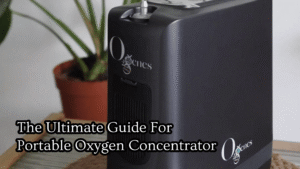Cancer, a formidable and diverse group of diseases, poses one of the greatest challenges to modern medicine. With the quest for effective treatments continually evolving, the potential role of hyperbaric oxygen therapy (HBOT) in cancer care has become a subject of interest. This review aims to explore the current state of research and understanding of HBOT in the context of cancer. We will delve into the mechanisms, potential applications, and ongoing investigations, shedding light on its intricate relationship with this complex disease.
Hypoxia is a critical hallmark of solid tumors and involves enhanced cell survival, angiogenesis, glycolytic metabolism, and metastasis. Hyperbaric oxygen (HBO) treatment has for centuries been used to improve or cure disorders involving hypoxia and ischemia, by enhancing the amount of dissolved oxygen in the plasma and thereby increasing O2 delivery to the tissue. Studies on HBO and cancer have up to recently focused on whether enhanced oxygen acts as a cancer promoter or not. As oxygen is believed to be required for all the major processes of wound healing, one feared that the effects of HBO would be applicable to cancer tissue as well and promote cancer growth. Furthermore, one also feared that exposing patients who had been treated for cancer, to HBO, would lead to recurrence.
Nevertheless, two systematic reviews on HBO and cancer have concluded that the use of HBO in patients with malignancies is considered safe. To supplement the previous reviews, we have summarized the work performed on HBO and cancer in the period 2004–2012. Based on the present as well as previous reviews, there is no evidence indicating that HBO neither acts as a stimulator of tumor growth nor as an enhancer of recurrence. On the other hand, there is evidence that implies that HBO might have tumor-inhibitory effects in certain cancer subtypes, and we thus strongly believe that we need to expand our knowledge on the effect and the mechanisms behind tumor oxygenation.
FAQs
Q1: What is hyperbaric oxygen therapy (HBOT)?
A1: HBOT is a medical treatment that involves breathing pure oxygen in a pressurized chamber, typically at pressures higher than atmospheric conditions. It is designed to increase the oxygen levels in the blood and tissues.
Q2: How does HBOT work concerning cancer?
A2: While not a direct treatment for cancer, HBOT increases oxygen delivery to tissues, which may help improve the effectiveness of certain cancer treatments, such as radiation therapy. It can also support tissue healing after cancer-related surgeries.
Q3: Is HBOT considered a standalone cancer treatment?
A3: HBOT is not a primary cancer treatment. Instead, it is often used as an adjunct therapy to enhance the outcomes of other cancer treatments. Its role varies depending on the specific cancer type and the patient’s needs.
Q4: Are there potential risks or side effects associated with HBOT in cancer care?
A4: Risks may include barotrauma (ear or sinus discomfort), oxygen toxicity, or complications in certain cancer cases. It is crucial to assess individual circumstances and consult with oncologists or healthcare providers.
Conclusion
Hyperbaric oxygen therapy (HBOT) represents a fascinating area of exploration in the realm of cancer care. While it is not a standalone treatment for cancer, its potential to enhance the efficacy of other cancer therapies, particularly radiation therapy, is intriguing. The integration of HBOT into comprehensive cancer treatment plans remains a subject of ongoing research and debate.
As with any medical intervention, the application of HBOT in cancer care should be approached with careful consideration, personalized assessments, and the guidance of oncologists and healthcare professionals. Future studies and investigations are likely to provide further insights into the precise role of HBOT in the broader landscape of cancer treatment.






